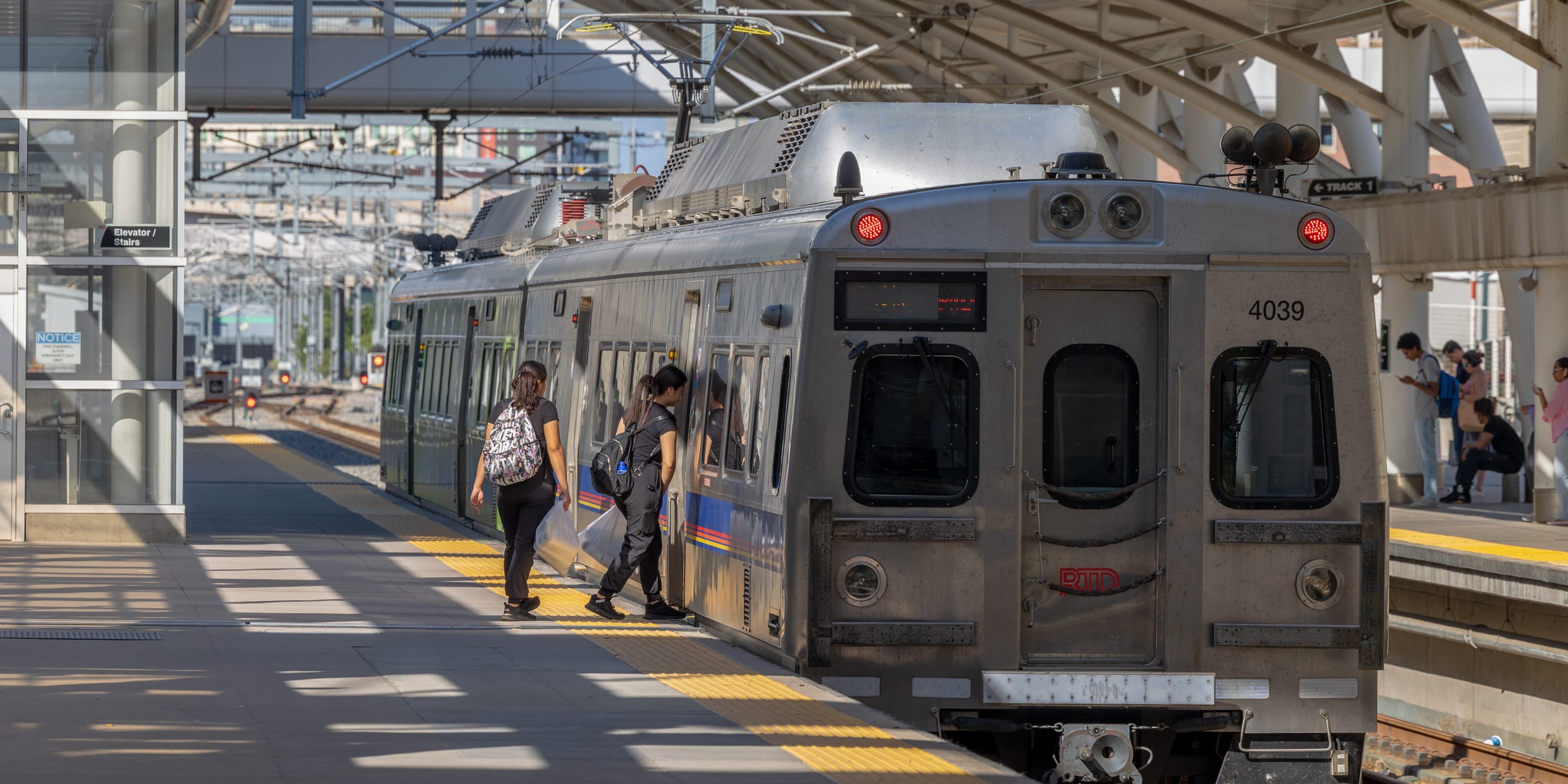
RTD’s proposed 2026 budget will balance transit delivery with careful navigation of fiscal challenges
The agency will implement cost-saving measures in 2026 to maintain service levels, fulfill core functions, and retain its workforce
DENVER (Oct. 16, 2025) –– The Regional Transportation District (RTD) is proposing a $1.3 billion budget for Fiscal Year 2026, an amount that includes appropriations for operating expenses, state of good repair work, and debt service before carryforwards. The proposed 2026 budget was made available on Oct. 10 and presented during the RTD Board’s Finance and Planning Committee on Tuesday evening. The proposed budget aligns expenses with RTD’s Strategic Plan, minimizes impacts to transit service delivery, and retains the agency’s people power needed to deliver on its mission.
Tuesday’s committee discussion included an overview of cost-saving recommendations under consideration in the 2026 proposed budget to more closely align expenditures to projected revenue.
“In the region and across the country, several businesses, organizations, and municipalities are navigating significant financial uncertainty,” General Manager and CEO Debra A. Johnson said. “For many public transit agencies, including RTD, the near-term financial outlook is challenging and will require a deliberate and forward-thinking approach to balance expenses and revenue. The agency must make budgetary decisions that will safeguard RTD’s long-term financial health and ensure it is to continue delivering essential transit services and connections in the Denver metro area.”
For FY 2026, RTD’s Board of Directors is considering $1.3 billion in appropriations for operating expenses, state of good repair work, and debt service. The proposed appropriations do not include any capital carryforward expenses from the 2025 budget. Excluding the impact and timing of East Colfax Bus Rapid Transit (BRT), RTD’s revenue budget is expected to increase 6.4% to $1,141 million over the 2025 budget. The agency’s labor and purchased transportation expense comprise more than two-thirds of operating expense in next year’s proposed budget.
RTD’s primary source of revenue, approximately three-fourths in the 2026 proposed budget, comes from the collection of a one-percent sales and use tax in the Denver metro area. The sales and use tax is subject to external market factors, including inflation, recessions, and the availability of goods and services. The agency’s finance team has been closely and regularly monitoring financial forecasts, year-to-date expenses, and revenue projections to guide the 2026 fiscal year budget development. The proposed budget also accounts for uncertainties in the financial climate for government agencies and private businesses alike.
The Business Research Division (BRD) of the University of Colorado Boulder’s Leeds School of Business conducted independent third-party research to provide semi-annual sales and use tax forecast models to RTD in September 2025. The BRD projects a 1.2% increase in sales and use tax revenue in 2026, with a forecast of $877 million versus their latest forecast for 2025; $877 million in 2026 is 2.9% lower than the 2025 budget, as their projections for 2025 have declined since the 2025 budget was adopted in November 2024. In the year ahead, this revenue amount is forecasted to comprise 77% of RTD’s expected funding sources before the impact of East Colfax BRT. BRD’s medium forecast financial models are used by RTD to develop its annual budget and five-year financial forecast.
RTD will take a disciplined approach to managing expenses in the year ahead and is proposing the implementation of a variety of cost-saving opportunities.
Funding for service contracts that did not meet the anticipated budget costs for 2025 will be pared back in 2026, resulting in a projected $17 million savings. The agency’s partnership program also may be streamlined for a $2 million savings. The agency’s closed (legacy) pension plan contribution for salaried employees is budgeted at $7 million in 2026 as compared to $15 million in 2025, since the plan is considered adequately funded. Other reductions in the proposed budget include delayed hiring for 81 vacant positions to yield $7 million in savings, and modifications to overtime are projected to deliver savings of $5 million.
RTD is not planning a reduction in force for 2026. However, the proposed budget does not include an allotment for a cost-of-living adjustment or merit increase for non-represented employees. In October 2025, the agency implemented a cost-saving measure impacting non-represented RTD employees who received a merit increase. The one-time lump sum distribution in 2025 resulted in $4 million in savings for 2026.
The 2026 proposed budget includes a recommended $20 million in debt financing for cutaway vehicles that are used for paratransit and FlexRide services. The plan proposes a defeasance, or prepayment, of $57 million in 2026 debt obligations to strengthen the agency’s fiscal outlook. The 2026 proposed budget includes no change to the FasTracks Internal Savings Account balance that is currently $192 million. The capital replacement fund is proposed at $166 million, though not expected to be sufficient to cover capital requirements through 2030. The operating reserve of $227 million is set to three months of operating expenses according to fiscal policy.
RTD will monitor the budget throughout 2026 and adjust, as necessary, while avoiding actions that would postpone funding for preventative maintenance or equipment replacement. The agency's FY 2026 budget complies with Colorado Local Government Budget Law.
A copy of the FY 2026 proposed budget is available on RTD’s website at www.rtd-denver.com/budget. The Board will consider taking action on the proposed budget on Dec. 2 at 5:30 p.m., following a public hearing. Customers and community stakeholders are invited to attend the meeting either in-person or remotely via Zoom to provide comment. If adopted by the Board in December, the proposed budget will run from Jan. 1 to Dec. 31, 2026.